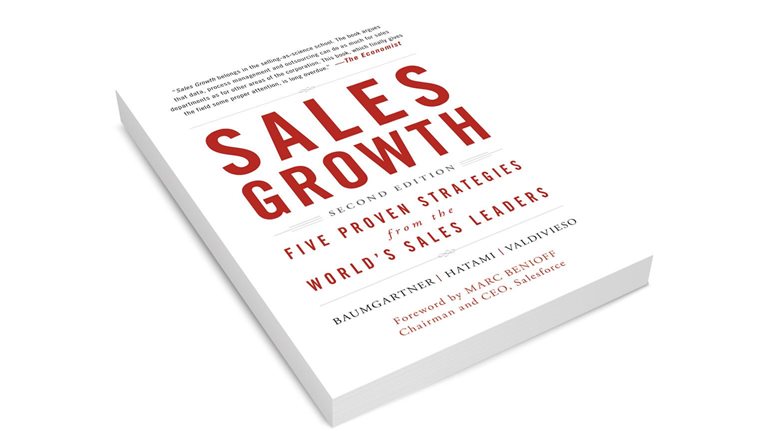“We’ve got to go digital.” Every sales leader has heard some variation of that statement. But what is digital, actually? And of all the digital things to do out there, what matters most for driving sales growth?
To help answer this question, we conducted a survey of more than 1,000 US and European sales executives, as well as interviewing dozens of sales executives and doing research for the book Sales Growth: Five Proven Strategies from the World’s Sales Leaders. In our first article from this data set, we looked at the five areas where sales leaders outperform their peers (see “The sales secrets of high-growth companies”).
For this article, we looked at the how organizationally sales leaders drive performance. Our analysis revealed that fast-growing companies1 successfully connect seemingly opposite approaches:
- Front to back: Create a dynamic experience for customers, and use digital tools and data to power operations. It’s common for companies to overemphasize one or the other, but the greatest success lies in a marriage of both.
- Top to bottom: Successful sales organizations also overhaul the way things are done, from sales leadership all the way through frontline sales reps.
While this structure might sound like a “do everything” approach, its value is in providing a simple way to think through the connections needed throughout the organization to get the most from digital capabilities, from automating processes to delivering experiences across all channels to using analytics to enable the sales force.
Of course, this is all much easier said than done. In our survey, a majority of sales executives said that their companies are increasing their investments in digital sales tools and capabilities for the near term. Yet less than 40 percent believe they are even moderately effective at it and a mere 17 percent rate their capabilities as “outstanding.”
Would you like to learn more about our Marketing & Sales Practice?
There are, however, companies that are excelling—driving higher revenues from their digital channels and using digital technologies to power sales. Here’s how they’re doing it.
1. Front to back
Front end: The customer experience
Determine what your customer needs. Every effective digital strategy begins and ends with understanding what customers are thinking along every step of their decision journey and working religiously to meet those expectations. That means understanding what their unmet needs are and how they use the web, from searching sites to browsing on apps. At Grainger, which sells over one million industrial and commercial products, customers often don’t know exactly what they’re looking for. “We spend a huge amount of time understanding how we manage the tension of exact search versus a search that returns an unmanageable 200 products,” says Debra Oler, vice president for Grainger’s US industrial-supply business.

As part of the digital customer experience, companies should allow the option of an all-digital experience, e.g. provide instant price quotes online as opposed to requiring contact with a sales rep. One electronics company, for instance, built tools that let customers compile customized orders of differently configured products and then immediately see the impact of any changes on the price, even after the order is placed. The tools also allow customers to see how the manufacture of their order is progressing.
Go mobile. Since most customers are likely to be devoted owners of smartphones, all digital content should be optimized for mobile devices, including order entry, purchasing, and order history. This is especially crucial for companies with large numbers of customers on the move. Grainger, for instance, developed an app whereby technicians, who may be responsible for maintenance on dozens of hotels or other commercial properties, can quickly live-chat with a Grainger product expert to get answers to repair or parts questions. Technicians can also use their phones to take a picture of an unfamiliar part and send it to the company for identification and then purchase. As a result of these and other features, the portion of Grainger’s e-commerce traffic coming from mobile devices is 15 percent and rapidly growing.
Continuously test to optimize offerings. Thanks to the ultralow cost of e-commerce and the highly trackable nature of digital interactions, companies can and should adopt a spirit of discovery toward their digital offerings. Relentless testing of different site formats, promotions, and configurations can maximize visitor numbers, transactions, and revenue. One leading multibillion-dollar global e-commerce site launched more than 100 new marketing campaigns within six months of its launch, using a rapid test-and-learn pilot approach—and Amazon, the oft-cited leader in all things digital, employs a large team of PhDs to constantly analyze the layout of the site, using advanced testing techniques to evaluate multiple versions of it at any given time and find which permutations generate the most sales.
Back end: Sales operations and insights
Our survey reveals that many fast-growing companies use digital tools and analytics to empower salespeople to work more effectively and more efficiently. Some 43 percent of fast-growing companies say they are successful in using digital tools and capabilities to support their sales organizations, versus just 30 percent of slow growers.2 When using analytics to make decisions, the disparity is even greater: 53 percent of fast growers rate themselves as effective, compared with 37 percent of slow growers.
Get in front of the best sales opportunities. When we asked sales execs to identify which specific factors were the most important for driving sales growth, their top choice was the ability to identify the right customers and opportunities. Analytics and tools for lead qualification and scoring are crucial. They can evaluate the likelihood that a lead coming from a particular type of customer or particular channel—say, a website email, referral from a conference, or inquiry at a retail store—will result in a sale, letting sales reps prioritize their time and efforts. In the same way, sales leadership can use analytics to make ongoing deployment decisions about which reps should go to which accounts in which markets, and how much quota to assign. One large IT company used McKinsey’s sales-coverage planning software, Rep Planner, to reposition and ultimately reduce the numbers of its sales reps, yielding a 5 to 7 percent improvement in sales productivity.
Analytics should also focus on identifying customer trends and patterns that provide next-product-to-buy or related-purchase recommendations tailored to each customer, thereby delivering a great customer experience. For instance, one Fortune 500 market leader in business outsourcing found that its customers who had bought a particular product, had a growth rate above a certain threshold, and had expanded internationally within the previous 12 months were disproportionately likely to buy another particular product. Analytics can also be used to flag when a customer might be ready for an upgrade or renewal.
Integrate with channel partners. The best sales organizations have extended their own digital systems and data to connect with resellers and marketplaces, sharing, for instance, prospecting lists and support for managing sales-rep performance. Cisco became a leader in this practice after it realized it was getting a lot of the same complaints from resellers: the deal-registration process was a headache, and deal reviews and approvals were slow. Channel partners complained they were losing deals as a result. Now, when a partner’s rep registers a deal on Cisco’s portal, she can see immediately if her contact person is available to approve the deal on the spot. If not, a voicemail gets converted to text and delivered to the Cisco manager, who can quickly accept, decline, or transmit to the next approver via mobile phone.

Looking beyond technology to drive sales operations
Optimize pricing. Survey respondents told us that optimal pricing for deals and products is the sales function with the highest impact on sales productivity. Digital tools offer unprecedented ability to compare current deals with a wide array of past data on similar sales and circumstances. Such dynamic deal scoring and discounting controls can help identify the highest possible price that will result in a sale.
2. Top to Bottom
Getting your organization ready
Too often, “going digital” means loosely stringing together pockets of digital activity instead of developing and implementing a coherent and unified digital strategy. The result is that customers are left hanging, either unable to get what they need or receiving incongruent communication. The best-performing companies couple top-down leadership with bottom-up change management to truly transform the way the organization works over the long term.
Top down: The biggest determinant of the outcome of any digital sales transformation is leadership commitment, clarity of strategic vision, and authority to run the show. Our survey showed that clear and consistent communication from sales leadership is more important in motivating an organization than, for instance, the level of resources expended.
Leadership must also work to bridge the divide between the marketing, sales, and IT departments. Digital transformations are cross-functional in nature, but these three functions often operate in silos. Our survey showed a significant disconnect in how the IT and marketing organizations evaluate their effectiveness, compared with the perception of their effectiveness in the sales force. One way to enhance collaboration is through an empowered sales-operations team that straddles sales, marketing, and IT. Successful sales-operations teams are able to work effectively across organizational boundaries to drive both front-end and back-end digital innovations in sales, for example, by working with marketing to improve the digital customer experience on the website, or working with IT to upgrade customer-relationship management and customer data.
Bottom up: Pairing back-end analytics and digital expertise with the right people out on the front lines is a crucial way to ensure that digital strategies pay off. This means having digitally literate sales reps who can integrate the information and insights gleaned from new tools and analytics into the way they sell. To make that happen, fast growers in our survey spend significantly more time and money on sales-force training than slow growers do. Given today’s shifting sales dynamics and norms, the best managers spend the time to mentor high-performing salespeople and support them in building new skills.
The best companies are also willing to adopt an experimental approach, continuously testing tools, analytics and features to make sure they are in line with how their sales teams sell and with what customers want. Companies can no longer afford to spend two years laboring away in isolation to achieve perfection.
While developing digital capabilities is essential to driving sales growth for B2B companies, capturing their full value potential depends on how well businesses can integrate people and technology across the organization.


